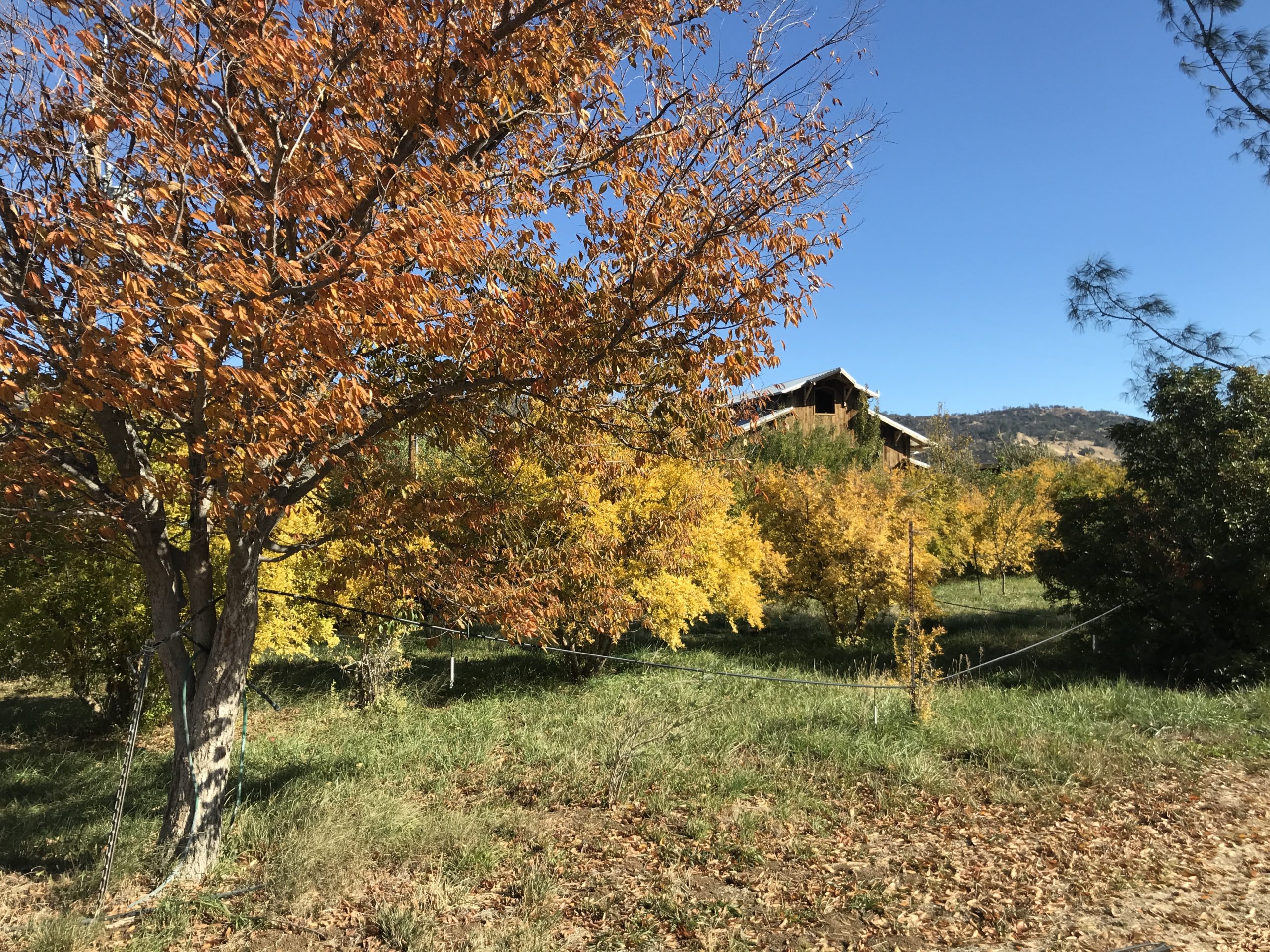
I’m never going to claim that our fall colors are anything like the Northeast, Colorado, or some of the other famous fall foliage areas, but we do have some nice colors this time of year. The peach trees have turned a yellow/orange color that seems to glow near sunset, the pomegranate trees have turned yellow, and there are some stunning red Chinese pistache trees around the farm. I didn’t get a good picture but you can view photos here or here.
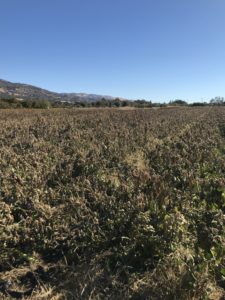
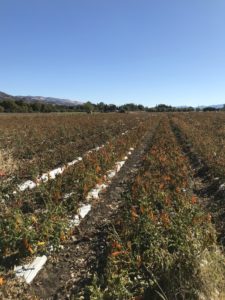
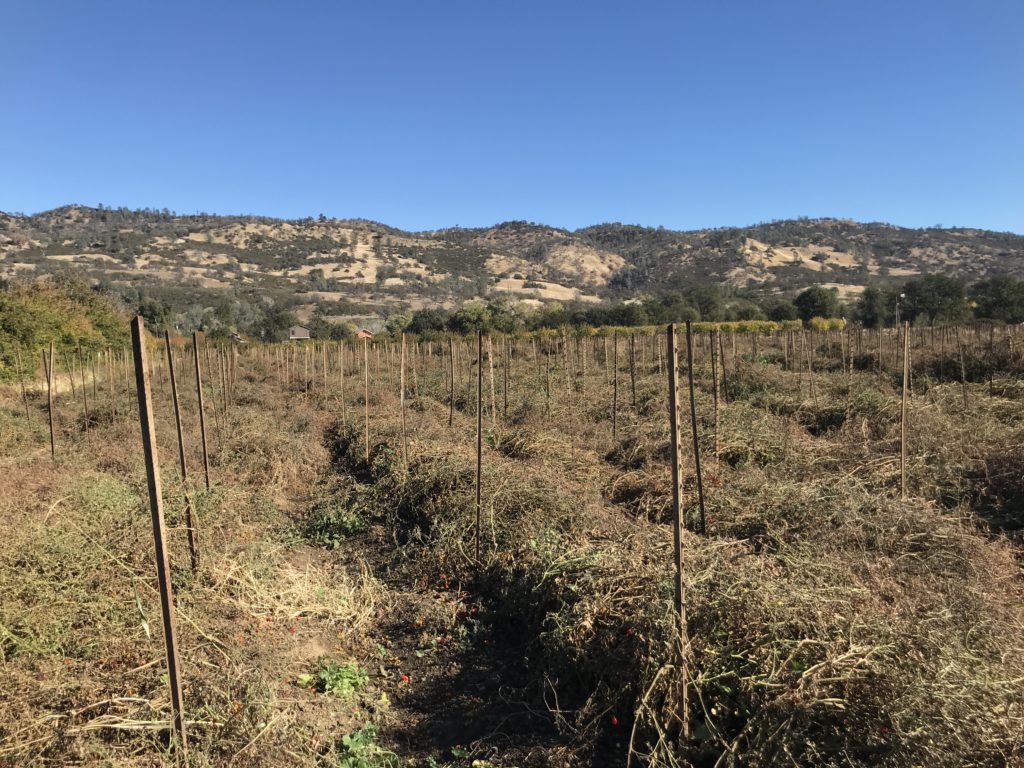
There are also a lot of browns and purples among the dead or dying summer crops. We’ve had four frosts so far – the first on the morning of November 3 killed the summer squash and basil and burnt the solanaceous crops (tomatoes, peppers, eggplant). After two more frosts last week, most of the remaining solanaceous crops are brown and look dead, officially ending our harvest of summer crops. All the ties for the tomatoes have been cut, and soon the stakes will be pulled and the fields mowed. This morning (November 14) was another frosty morning, with flowers, weeds, dead tomato plants, and even soil lightly coated in sparkling white frost.
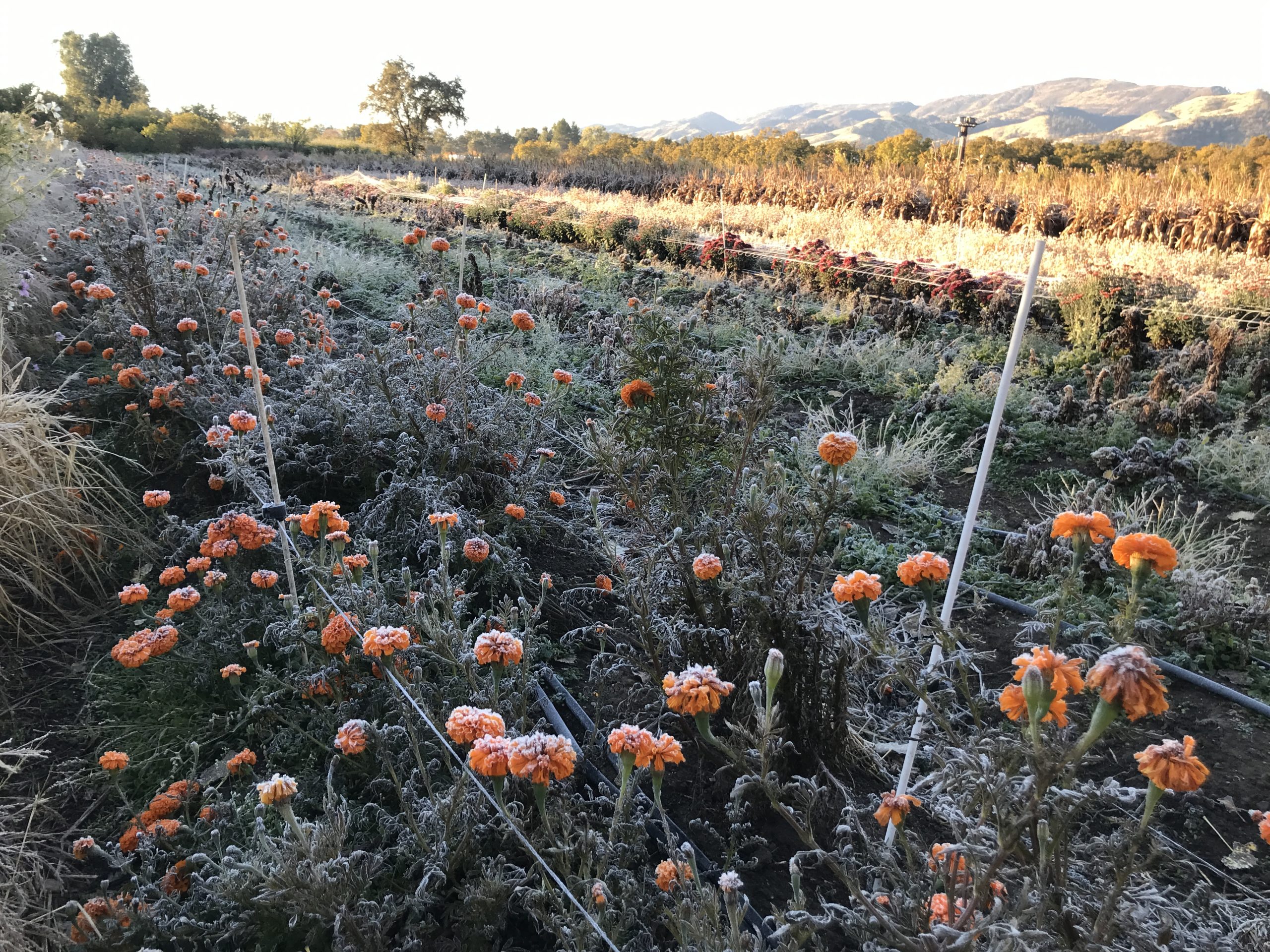
In fall, we don’t do much in response to a frost warning; we might cover lettuce with row cover but that’s about it. A frost in spring can have a far greater impact than one in fall and we do more to ward off its impact. We had a series of frosts in late February and then more in March and April and despite our best efforts to protect crops with water, several of our crops were impacted, especially fruit. We have a small stand of mulberries, and they had almost no fruit this year. The peaches were a mixed bag. After a frost, you assess the impact by cutting open the baby fruit, which might be the size of a pinky nail, to see if the seed is brown, indicating it’s been damaged. In some years, a frost wipes out all of the peaches and/or apricots. In others, damaged fruit pushes through and make fruit that’s just fine, albeit with a deformed pit. This year some varieties formed fruit while others didn’t.
The pomegranates were another impacted fruit; we have fruit, but they’re behind schedule. We got a frost right as the first set of leaves on the pomegranate trees had emerged. Those first leaves are vulnerable to the cold and died and the plants had to start over and use extra energy to push out a new set of leaves. As a result, the fruit was 3-4 weeks behind; they’re usually ready in early October, this year we didn’t harvest until the end of the month. Some of the fruit might have been harvested a little less ripe that ideal (we needed to get everything off the trees before they split in the rain) but all the fruit we’ve had so far have been great. The arils aren’t the darkest (note: almost all of our pomegranates are the “Wonderful” variety but we also have a few white pomegranate trees, so don’t worry if you have a very light colored fruit!), but they taste good and we’re grateful to have a crop at all. The frost could’ve taken out the entire crop like in 2020, or we could have a situation like that of our neighbor – almost all of their pomegranates this year have Alternaria fruit rot, caused by a fungus, rendering them inedible.
Frosts are natural and to be expected in the fall, winter, and spring, but they can be damaging and anxiety–inducing. Some research is predicting an increased risk of late season frosts as warmer winters, due to climate change, cause trees to bud and set flowers and fruit earlier before the threat of a frost has passed. Other research predicting less frost and less damage muddies what the future holds. It’s complicated to predict and our relationship with the cold is complicated; many fruit trees do need cold weather (they have chilling hour requirements) to form a good crop, but getting too cold at the wrong time is a problem. In the fall, frosts are not a big concern; they cause much less damage, maybe only to the most delicate of the leafy greens. And on the positive side, the cold makes the root vegetables sweeter and the first few frosts finally polish off the summer crops we’d otherwise feel obligated to keep harvesting. It does make for some cold mornings (and cold hands) though!
– Elaine Swiedler, CSA Manager
